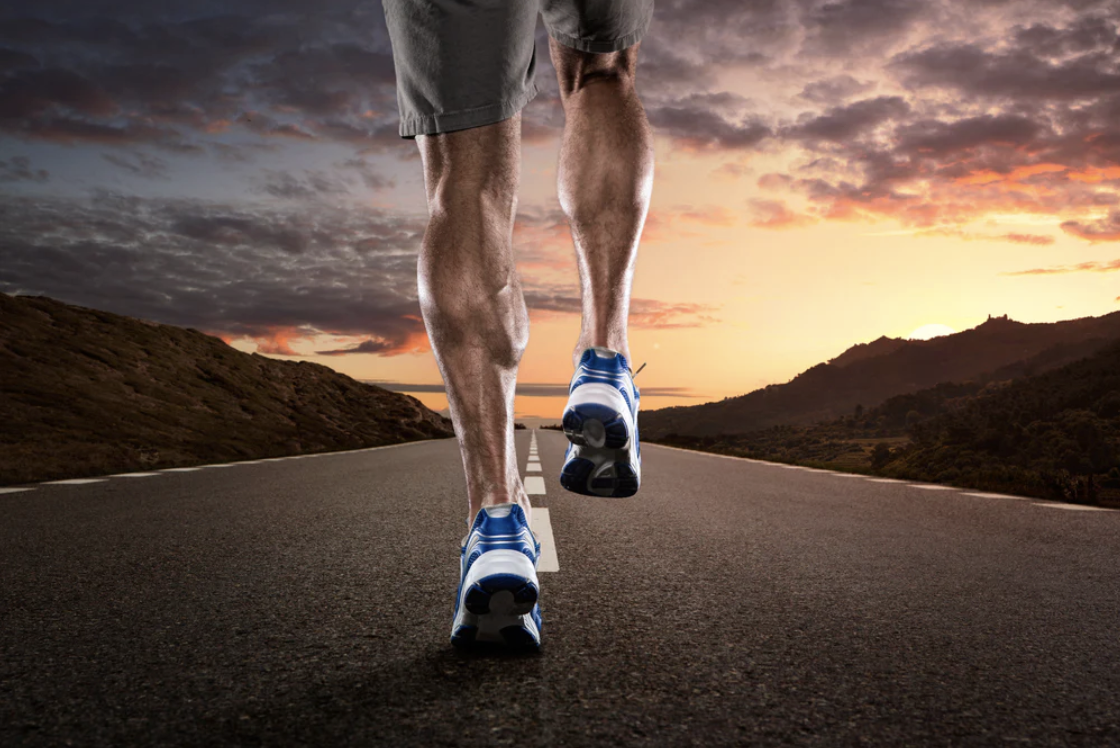How many Single-Leg Calf Raises can you do?
Has your Therapist ever given you calf raises as part of your exercise routine? Read below to find out why performing calf raises is so important for walking/running and test how many calf raises you should be able to perform for your age group.
The calf muscle is the powerhouse of the lower limb, with greater than 50% of power being generated from the calves when running. They transmit power to the foot and allow us to absorb shock when we land from running & jumping.
The calf muscle actually consists of 2 muscles, the Gastrocnemius and Soleus. These muscles come together to form the strongest tendon in the human body, the Achilles Tendon. It is important to identify which muscle has been injured when designing a rehab plan to ensure a full recovery and prevent it from recurring.
The gastrocnemius is designed with power in mind, while the Soleus muscle is focused more on endurance and support. The soleus muscle tends to work harder during distance running and where the knee is in a bent position. Injury to the soleus usually involves a tightening sensation felt in the lower calf during a slower run and may occur with fatigue, overtraining or a change in running surface/hills.
An injury to the Gastrocnemius can trigger a sudden onset of pain in the calf region, often caused by more explosive jumping or sprinting activities. The Gastrocnemius muscle crosses over the knee joint and works harder when the knee is in a straight position. This is important when strengthening the calf as each muscle can be isolated when performing a single leg calf raise, the gastroc works harder with the knee straight and the Soleus with the knee bent.
Running is a highly repetitive, single-leg exercise. So it makes sense to strengthen the calf muscles to improve performance and reduce the risk of injury.
Essentially the calf raise is a replication of the propulsive phase of gait. The key is to push through your big toe joint, as this bone is the largest in the forefoot and is designed to deal with increased load/force. This is known as ‘High Gear Propulsion”, as opposed to low-gear propulsion through the outside of our foot towards our smaller toes and bones.
The single-leg calf raise is a simple way to assess your calf strength.
Firstly, here are some key points to consider when performing this exercise.
You can use your fingertips against a wall to help with balance.
Keep your legs straight and ensure that you get the full height on each rep.
Pace yourself at one-second raising and one-second lowering, you can use a Metronome to help. I use an app called MetroTimer.
Push through your big toe, NOT the outside of the foot.
Avoid hitching your opposite hip or bending your knee to raise up.
Single leg calf raise exercise
How many single-leg calf raises should you be able to do?
As a reference Herbert-Losier et al (2017) studied over 500 active individuals and found the following “healthy normals” for each age group.
How did you compare to this select group of individuals? Have a think about incorporating calf raises into your regular routine. When you think of running it is a number of short single leg calf raises with every step so it pays to work on this area to improve performance and reduce the risk of injury.
Remember we are here here to help! If you have any questions please feel free to send me an email at craigpodiatry@activeriverina.com.au or call 02 6925 7734 to make an appointment.




